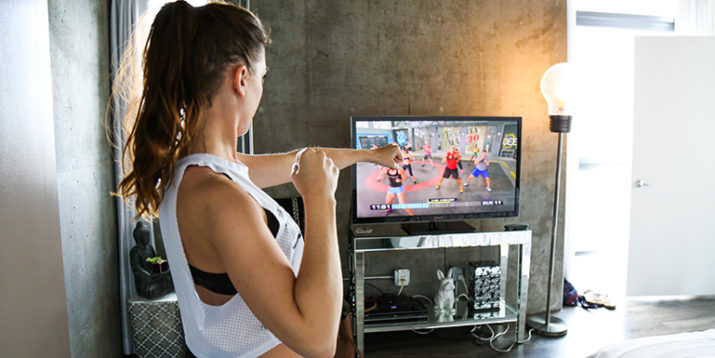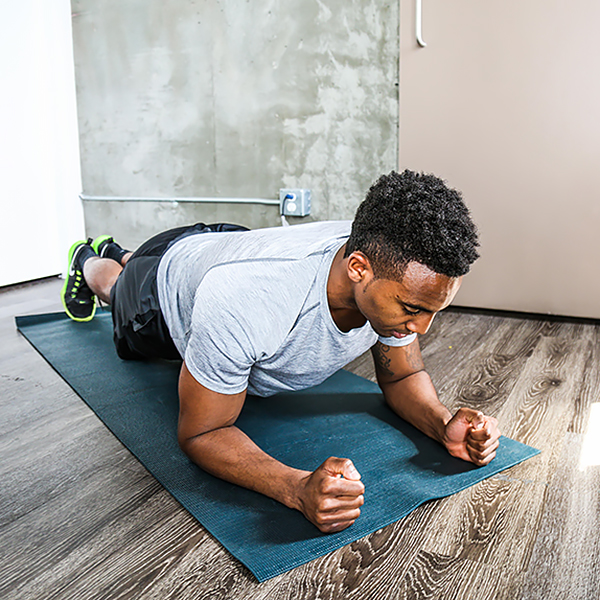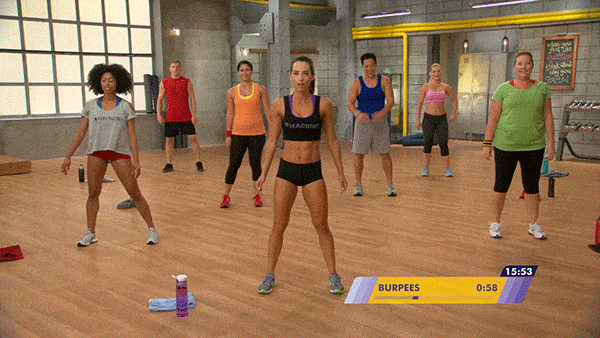How to Find Your Fitness Level in 4 Simple Tests

Most people are perfectly content with a laid-back, “just do it” approach to fitness: They hit the gym, work up a sweat, eat something healthy, and repeat. They’re happy with their current fitness level, and that’s all that matters.
As for VO2 Max, optimizing macro- and micronutrient ratios, and other specificities? Leave that to the pros and obsessives.
And that’s fine: If you’re seeking general fitness, exercise doesn’t need to be a part-time job — just something you do a few hours a week to keep the blood pumping, the body strong, and stress levels in check.
But now and then it pays to take a look under the hood to make sure you’re on track and moving in the right direction.
If you’re not assessing, goes the adage, you’re just guessing.
A good place to start is to assess your fitness level. Once you know that, you can see what things you can improve upon in your fitness regimen, or simply where you should start with a new fitness program.
Below we’ve assembled four simple tests to help you quantify your fitness. Each one measures the muscular strength, endurance, and power of a different part of your body.
Together, they’ll give you a good idea of your overall fitness. Use the results to guide your choice of class at your local gym or program on BODi.
(Looking for a refresher on what exactly is BODi? Get all the details here.)
Muscular Strength, Endurance, and Power
To find your fitness level, you should examine your ability to perform in the three key areas of fitness: relative strength, muscular endurance, and power. Here’s what these terms mean:
• Relative strength
This is how strong you are in relation to your body weight. This is different from absolute strength, which refers to the sheer amount of weight you can lift, regardless of your size.
Being able to bench 180 pounds isn’t all that impressive if you’re a 190-pound guy, but it’s a remarkable show of strength if you’re a woman who tips the scales at 110 pounds.
To keep everyone on the same playing field, the following tests focus on your ability to move your own body weight, which embodies the idea of relative strength.
• Endurance
Endurance is broken down into muscular endurance and cardiovascular endurance. The former measures the ability of your muscles to repeatedly contract against a resistance (dumbbell, barbell, body weight, exercise band, etc.) for a given amount of time.
The latter measures the ability of your heart and lungs to deliver oxygen to your body’s tissues during physical activity for an extended period of time.
The tests below focus on muscular endurance, which is most relevant to classes you may take at a gym or the programs on BODi.
On the other hand, cardiovascular endurance (also known as steady-state endurance) is the main component of something like running a 10K.
• Power
is the ability to express strength quickly, like sprinting or performing a vertical jump. It’s a key component not only to athletics but to healthy aging as well.
The more power you have, the more resistant you are to many types of injury.
“To be considered truly fit, you can’t neglect any of those athletic pillars,” says Trevor Thieme, C.S.C.S. “That’s why nearly every BODi program focuses on all of them, and why they’re all put to the test in each of the challenges below.”
4 Tests to Find Your Fitness Level
1. BODYWEIGHT SQUAT
Focus: Lower body
“There’s a reason why the squat is often referred to as ‘The King of Exercises,'” Thieme says. “No other move mobilizes more muscle below the waist.”
Perform a bodyweight squat with correct form: Stand with your feet hip-width apart. Push your hips back and bend your knees until the tops of your thighs are at least parallel to the floor.
Bring your arms in front of you, keep your back flat, your chest high, and your weight on your heels. Return to the standing position as quickly and powerfully as possible.
Repeat for one minute and record the number of reps completed.
BEGINNER: less than 20
INTERMEDIATE: 20–40
ADVANCED: more than 40
2. PLANK
Focus: Core
There’s more to the core than making you look good in a bathing suit. The actual job of those muscles (including your abs, obliques, back muscles, and muscles around the pelvis)?
“Stabilizing the spine,” says Thieme. No exercise tests this capacity, which requires tremendous “strength-endurance,” better than the standard plank.
- Assume a push-up position, but with your weight on your forearms instead of your hands (your elbows should be directly beneath your shoulders).
- Squeeze your glutes and brace your core to lock your body into a straight line from head to heels.
- Hold for as long as possible and record your max time.

BEGINNER: less than 60 seconds
INTERMEDIATE: 60–120 seconds
ADVANCED: more than 120 seconds
3. PUSH-UP
Focus: Upper body
Think you need a barbell and three gargantuan spotters to test your upper body?
Think again: “Studies show the push-up activates just as much muscle as the bench press when matched for intensity — without the need for equipment,” says Thieme.
Perform a push-up with correct form: Get on all fours with your feet together and place your hands in line with (but slightly wider than) your shoulders.
Clench your glutes and brace your core to lock your body into a straight line from head to heels. Keeping your elbows tucked, lower your chest until it’s a few inches from the floor.
Push yourself back to the starting position, keeping your body straight the whole time. Repeat as many times as you can in one minute. Record the number of reps completed.
Women:
BEGINNER: less than 15
INTERMEDIATE: 16–24
ADVANCED: more than 25
Men:
BEGINNER: 25 or fewer
INTERMEDIATE: 26–39
ADVANCED: 40 or more
4. BURPEE
Focus: Total body
The final test blends qualities of the previous three — and, as such, tests the strength and endurance not only of your upper body, lower body, and core but of all of them together.
That’s why the burpee is a staple in the workout routines of everyone from basketball players to Navy SEALS. “It makes everything burn, including your lungs,” Thieme says.
Perform a burpee:
- Stand with your feet hip-width apart.
- Push your hips back, bend your knees, and place your hands on the floor in front of you.
- Jump your feet back into a push-up position, and then back into a squat position.
- Now explode up, reaching overhead as you jump off the floor.
- Land softly, and immediately begin your next rep.
- Repeat as many times as you can in one minute. Record the number of reps completed.

BEGINNER: 20 or fewer
INTERMEDIATE: 20–30
ADVANCED: 30 or more
World record (in case you’re wondering): 47
Which Workout Is Right for You?
After you complete all four tests and record your results, head to BODi to find the perfect program for you.
It’s easy if you scored the same fitness level for every test — if you’re beginner through and through, Country Heat or Clean Week would be a good place to start.
Intermediate all around? Take a stab at 645 or 9 Week Control Freak. If you got to the advanced level for all four tests, give INSANITY MAX:30 a shot.
But because fitness isn’t always that formulaic, you might have scored intermediate in the bodyweight squats, but beginner in the plank.
That’s when you’d want to find a program with a fitness level of beginner/intermediate, like 21 Day Fix or Barre Blend.
Or, if you crushed the burpee section to land in advanced fitness level, but struggled to break the intermediate level for push-ups, an “intermediate/advanced program” like CORE DE FORCE could be perfect for you.
These in-between programs are also useful if you want to challenge yourself with a program that’s slightly above your current level, but you don’t want to take the jump up an entire level right away.
Check out our list of some of the programs on BODi for an overview of what’s available for every fitness level and workout style.

